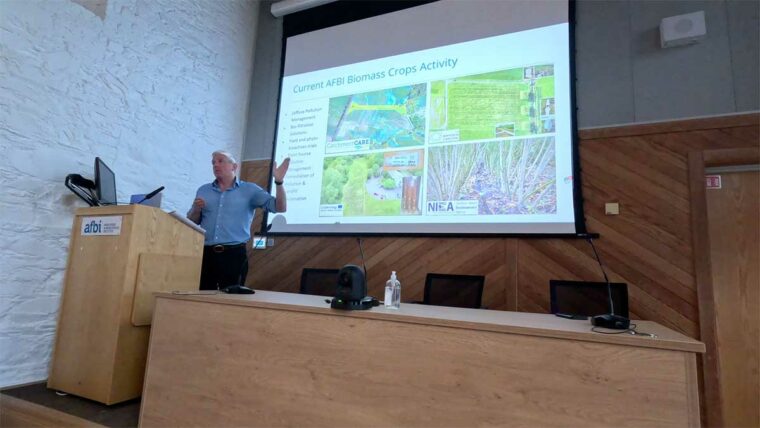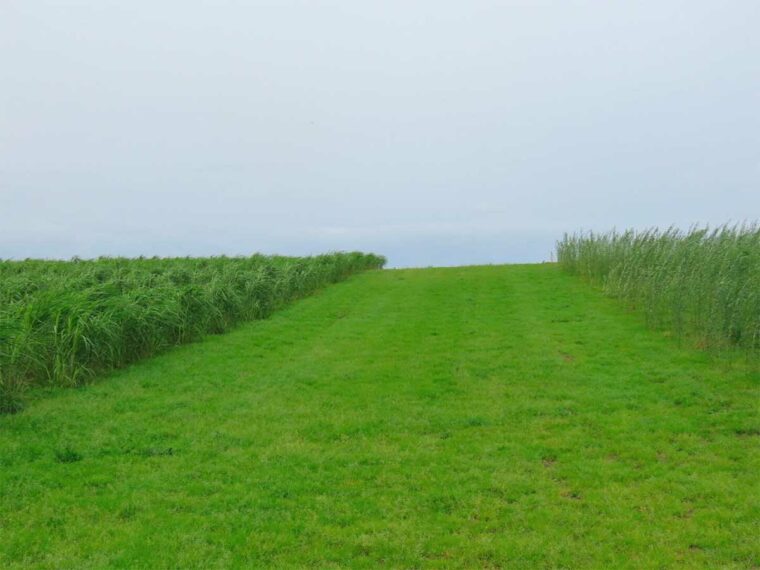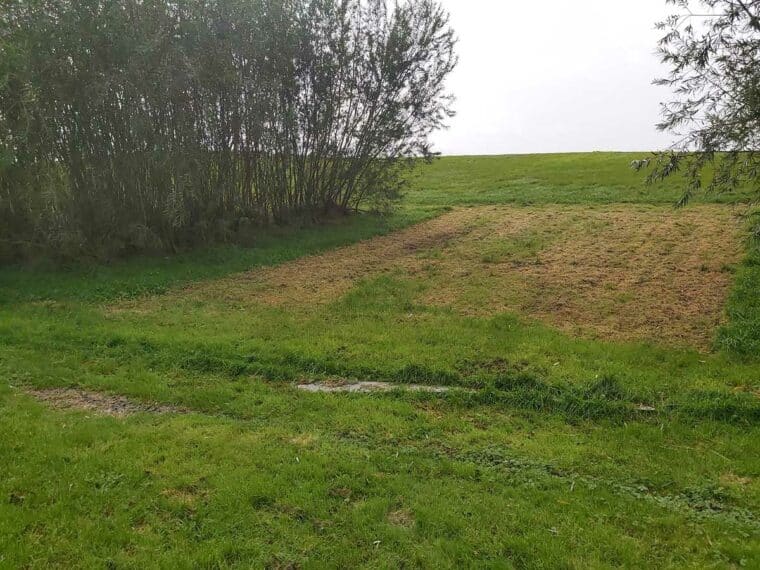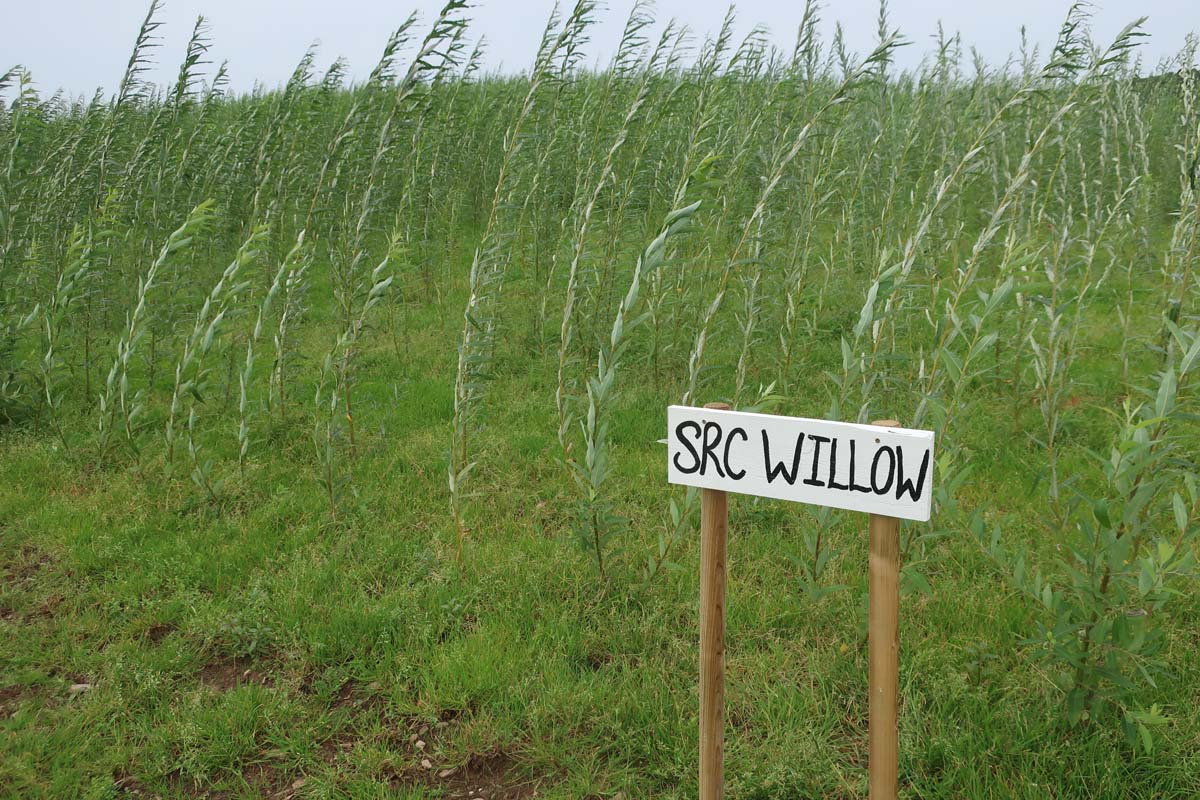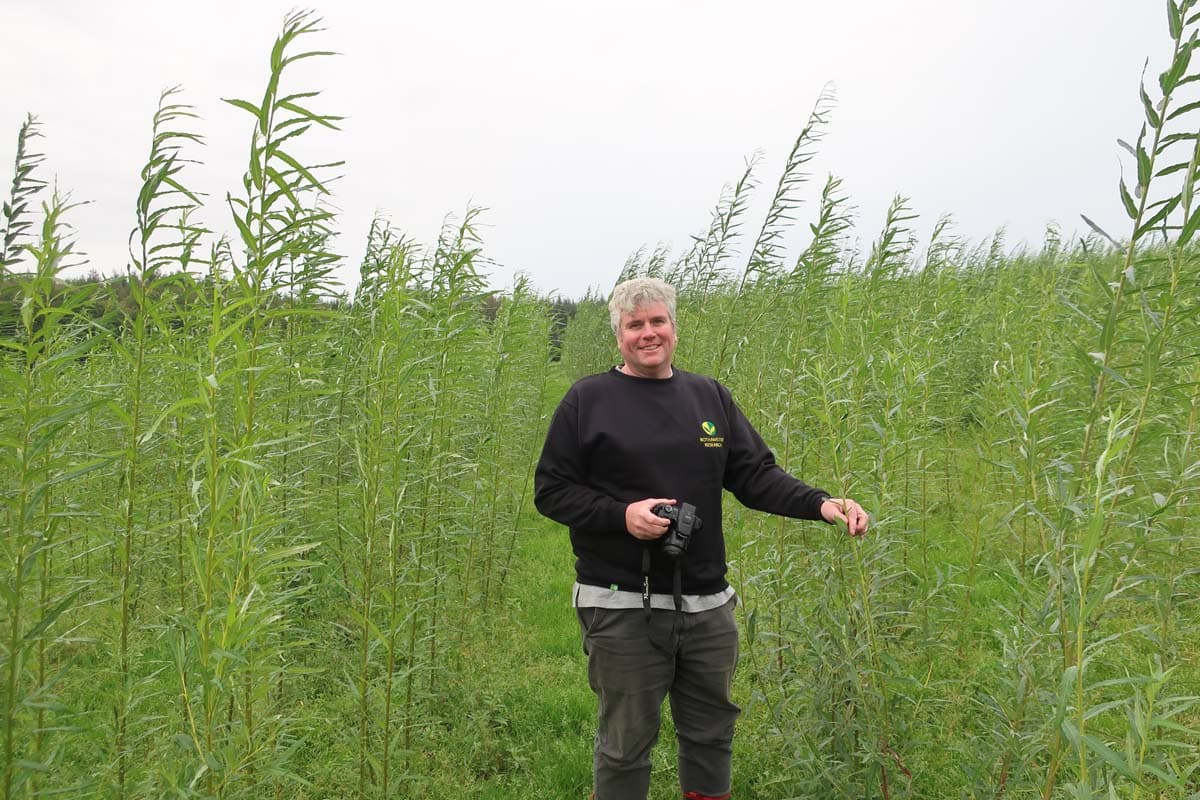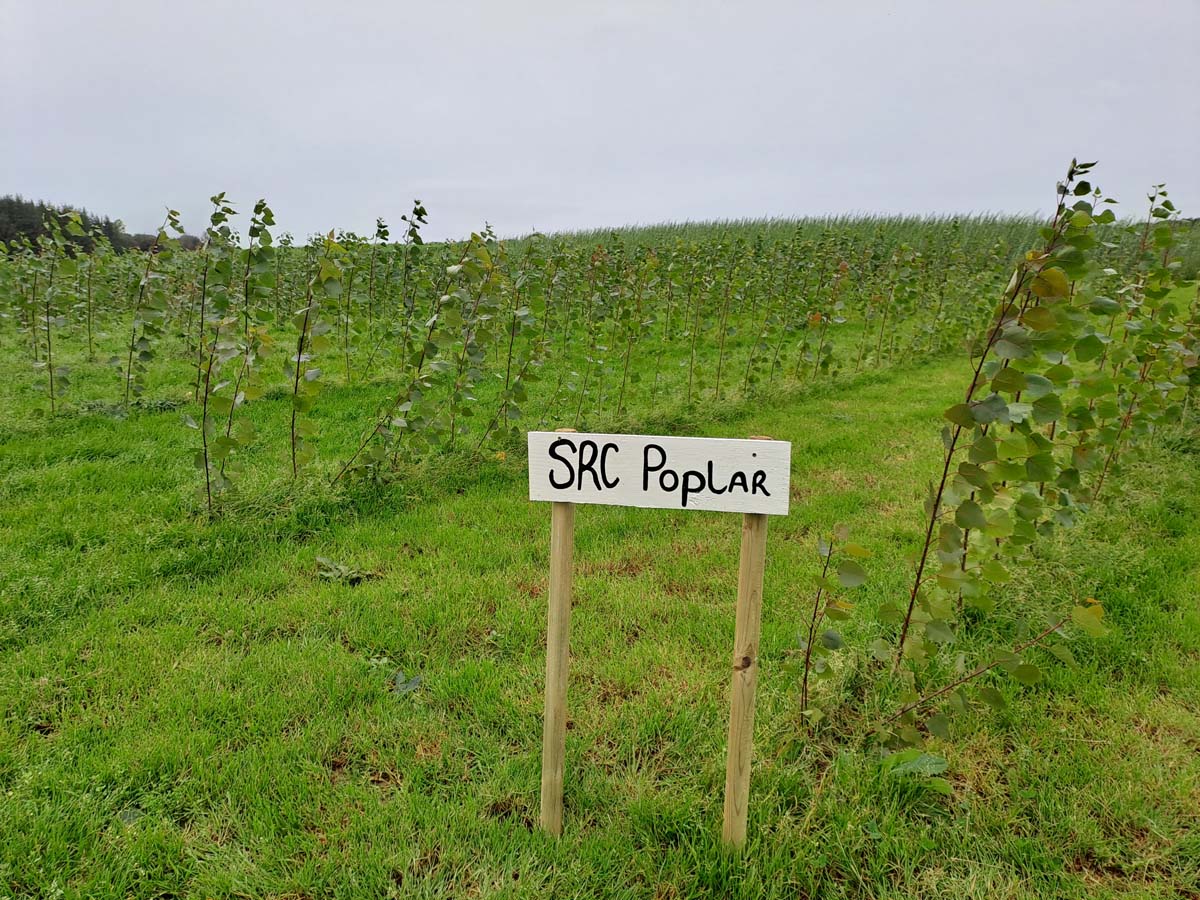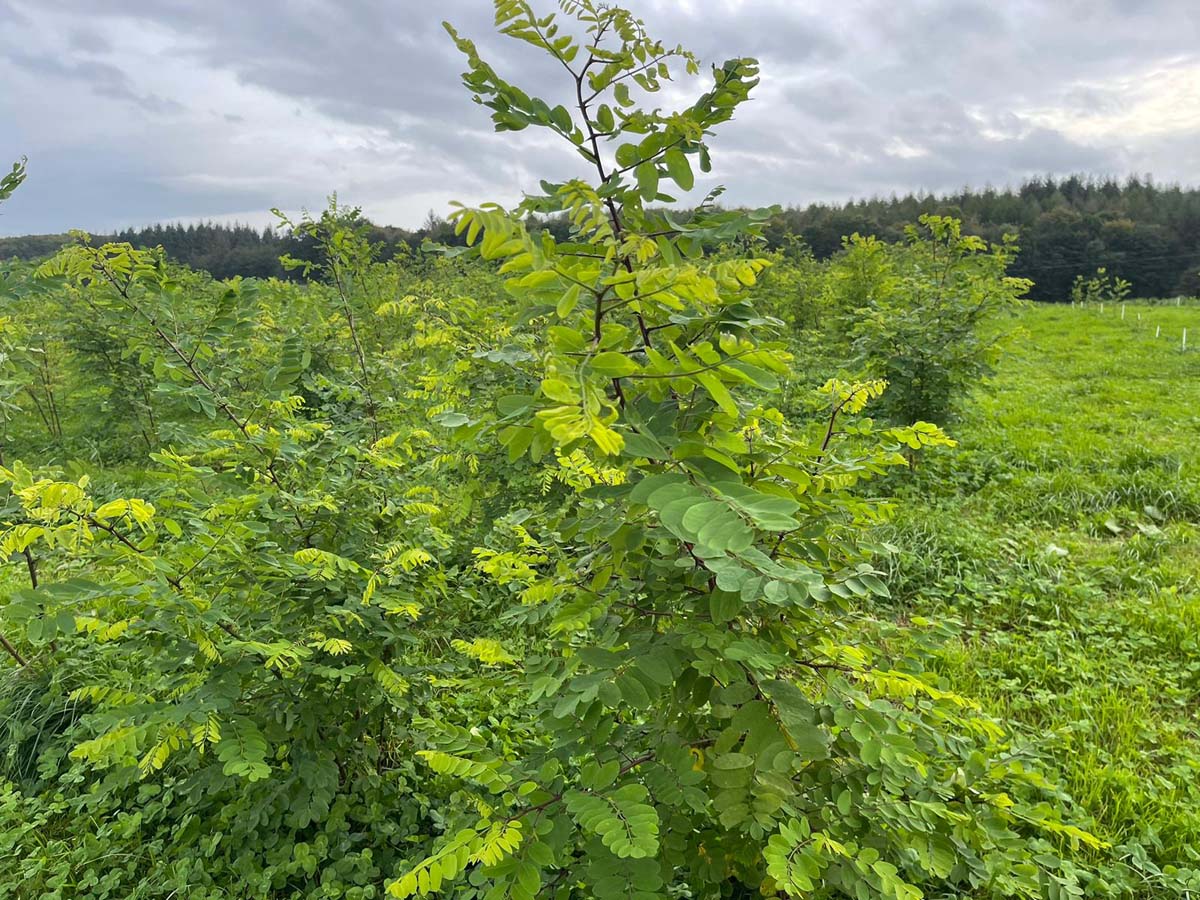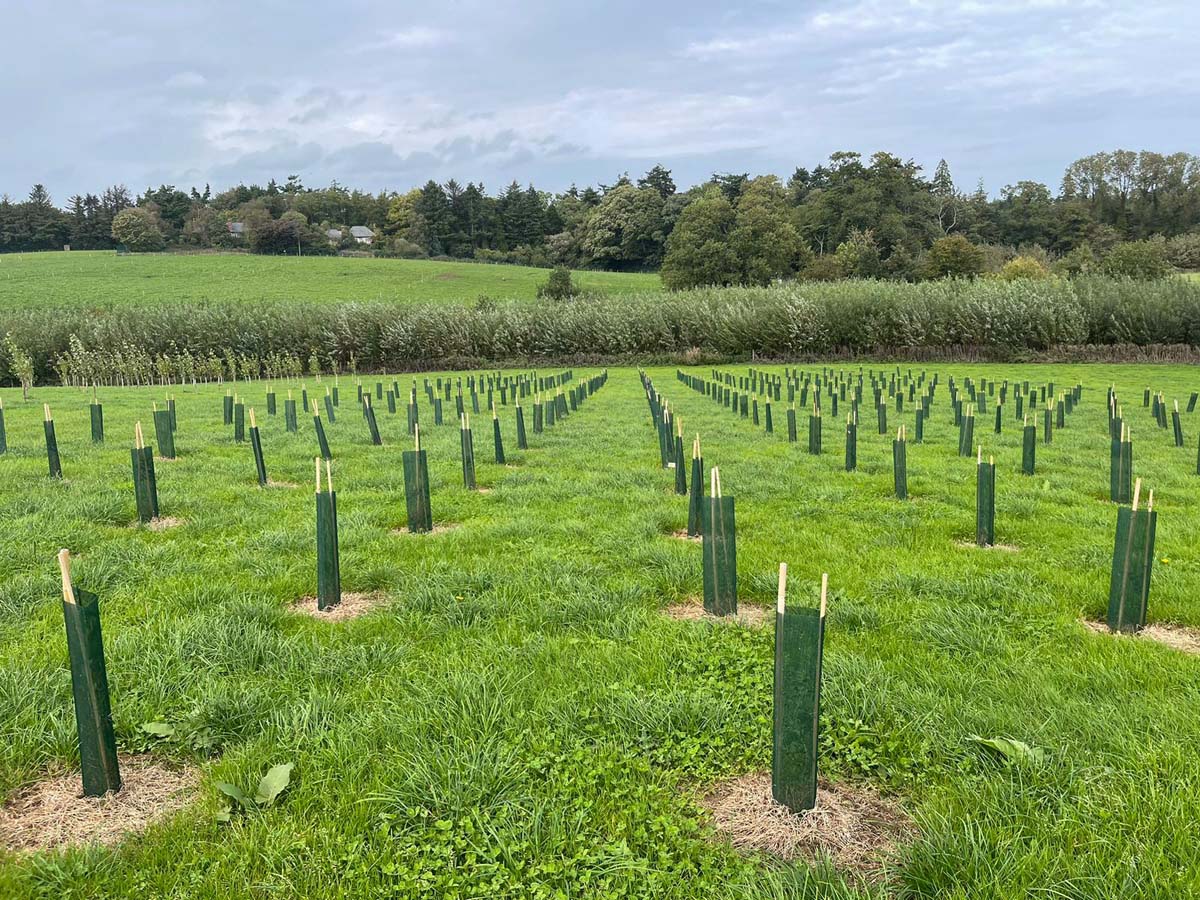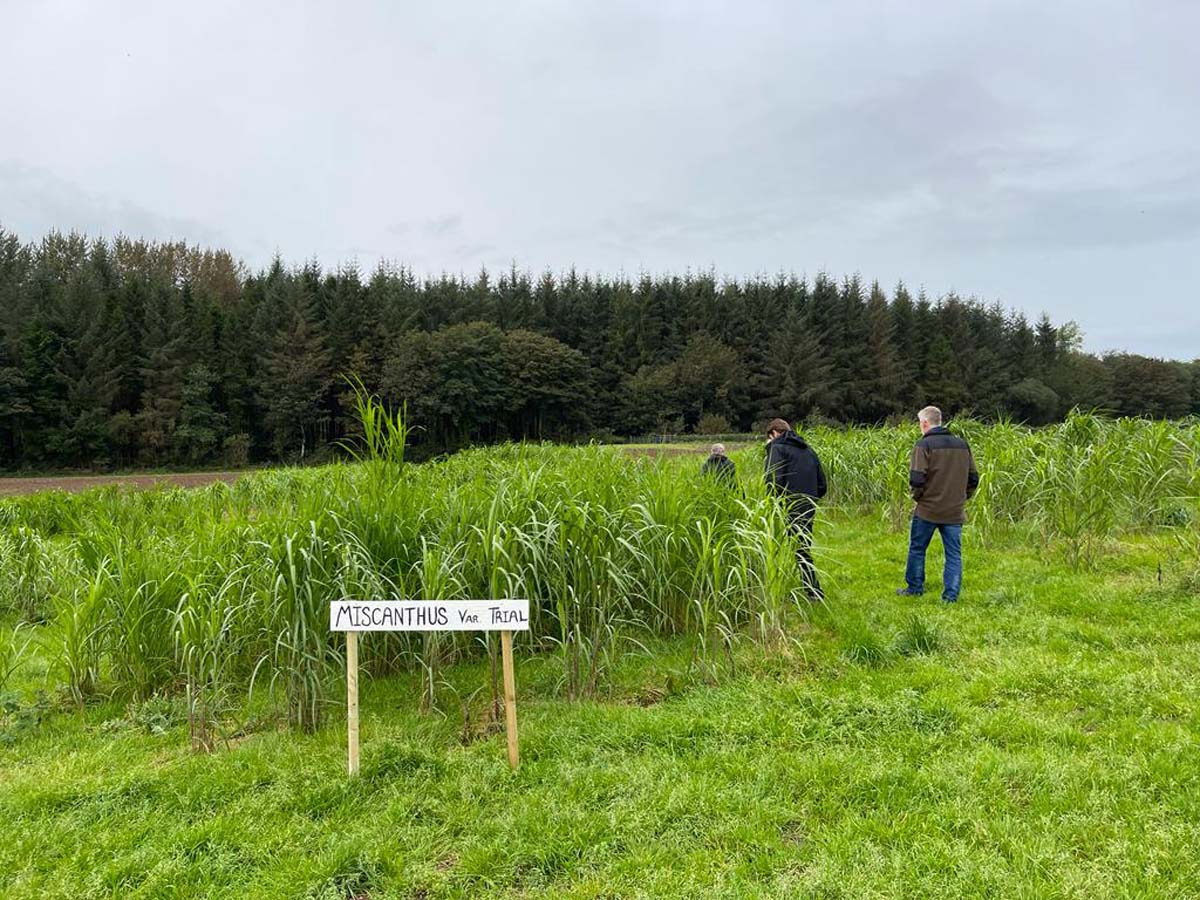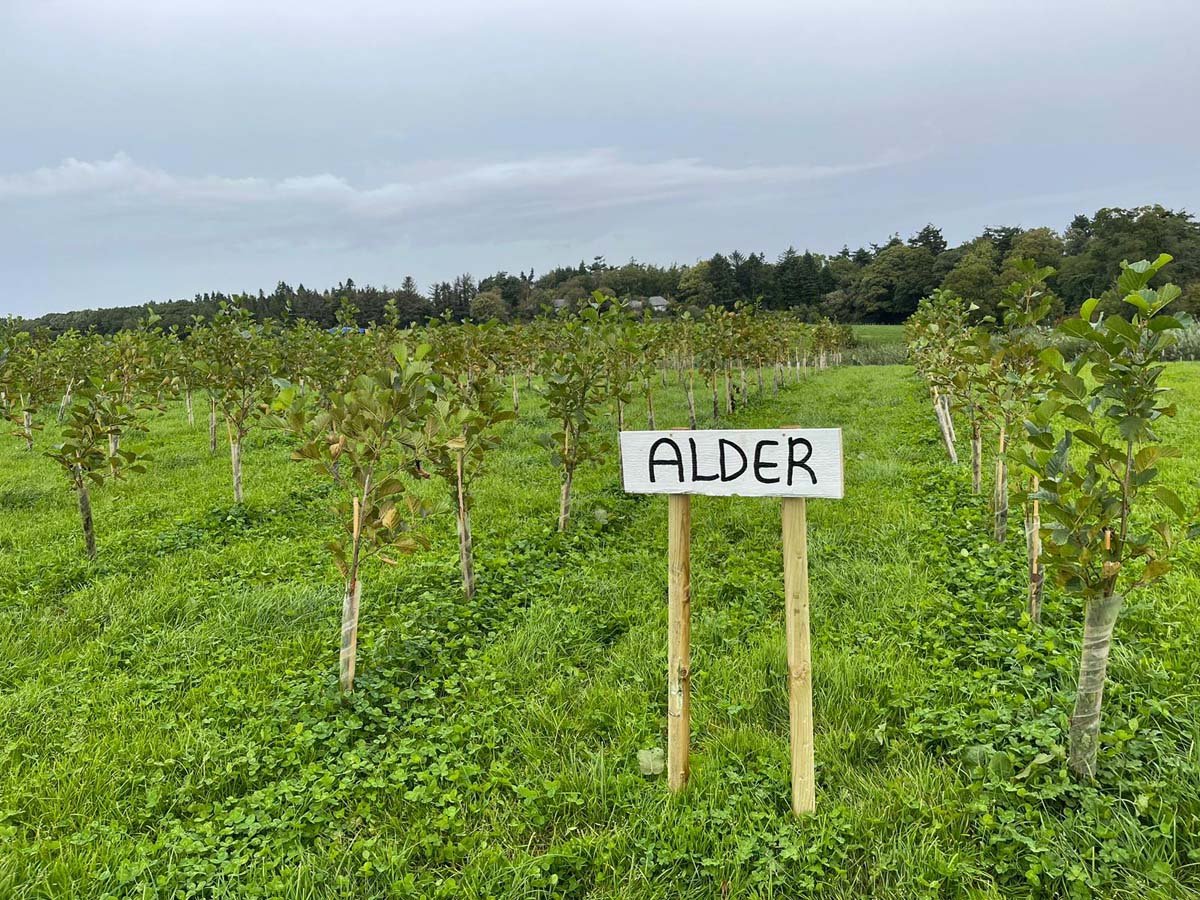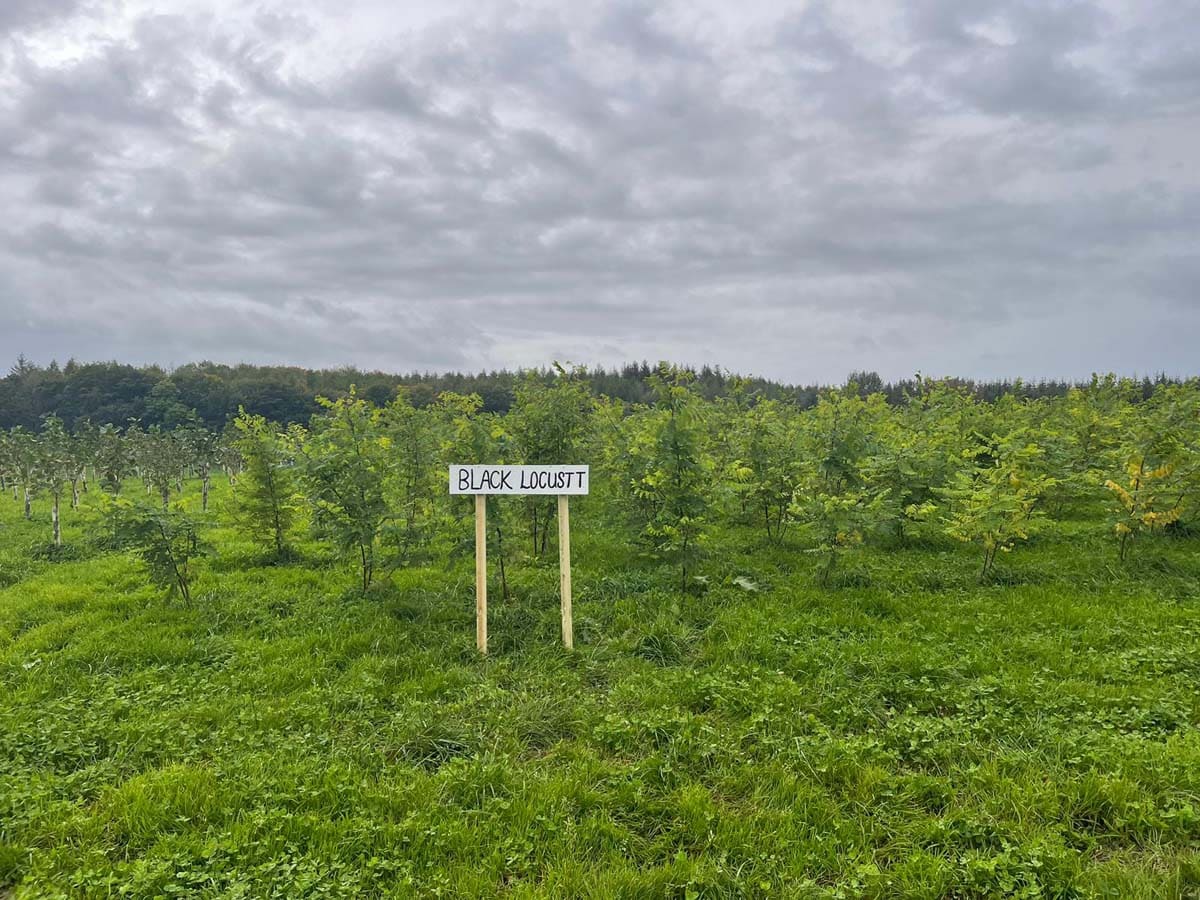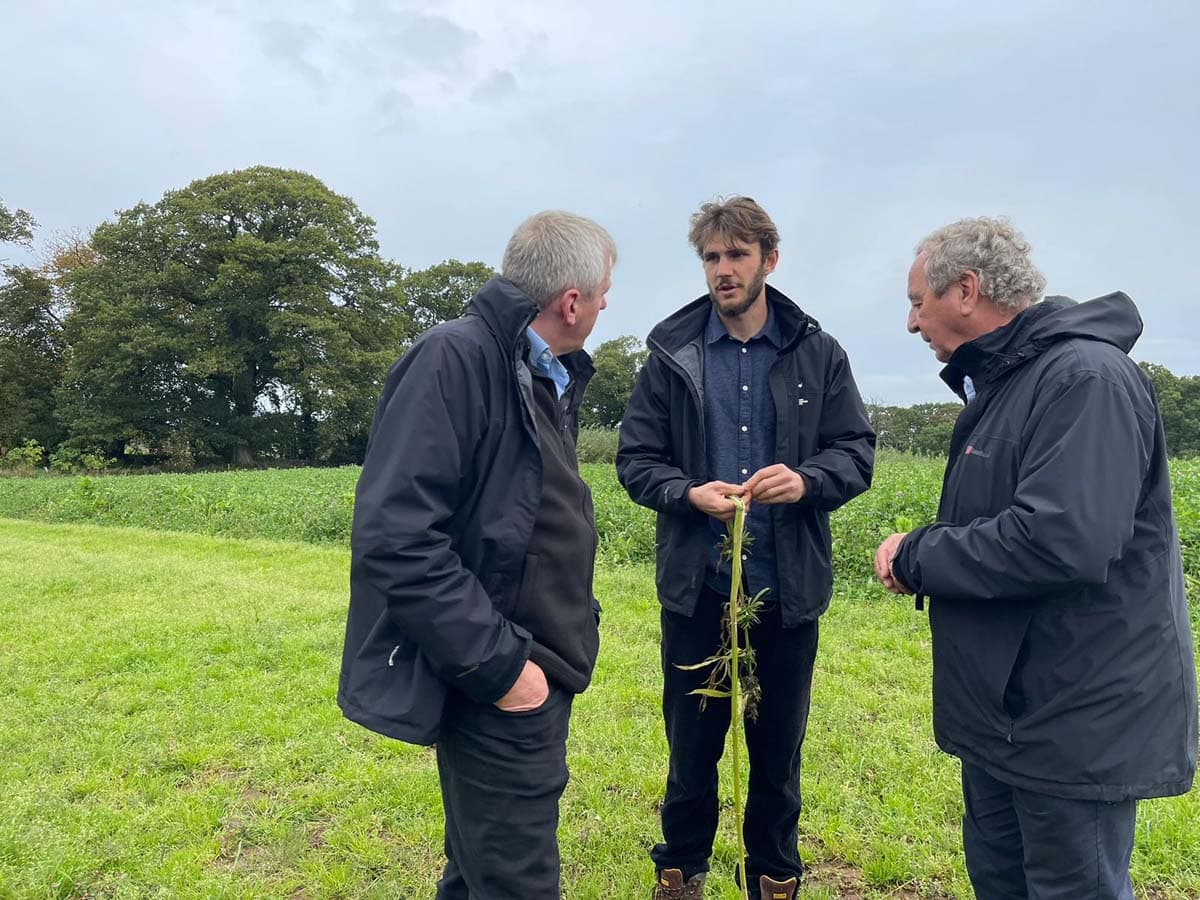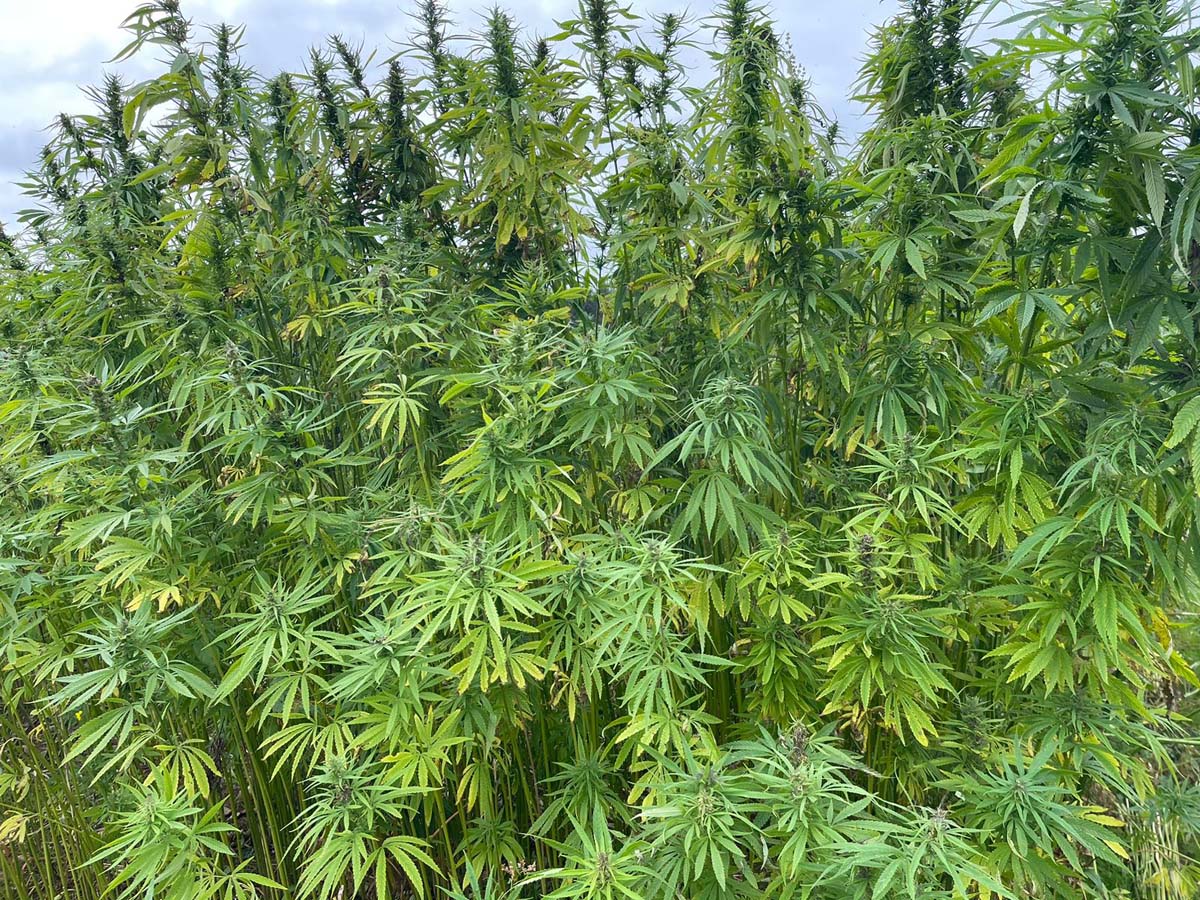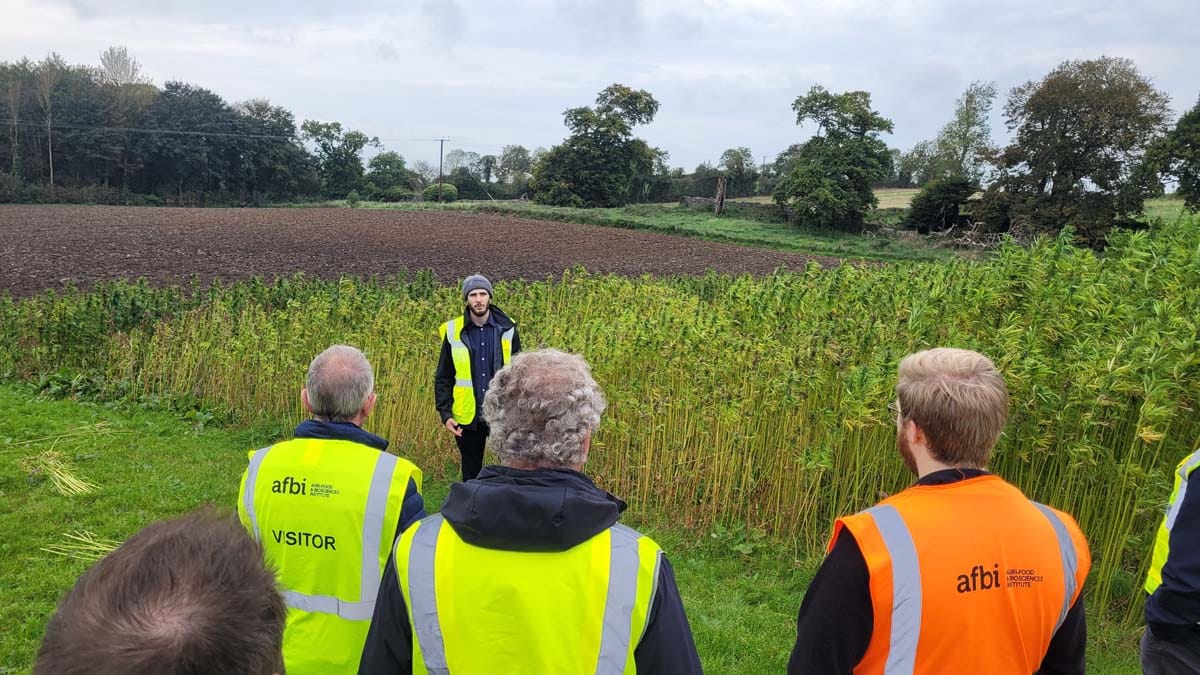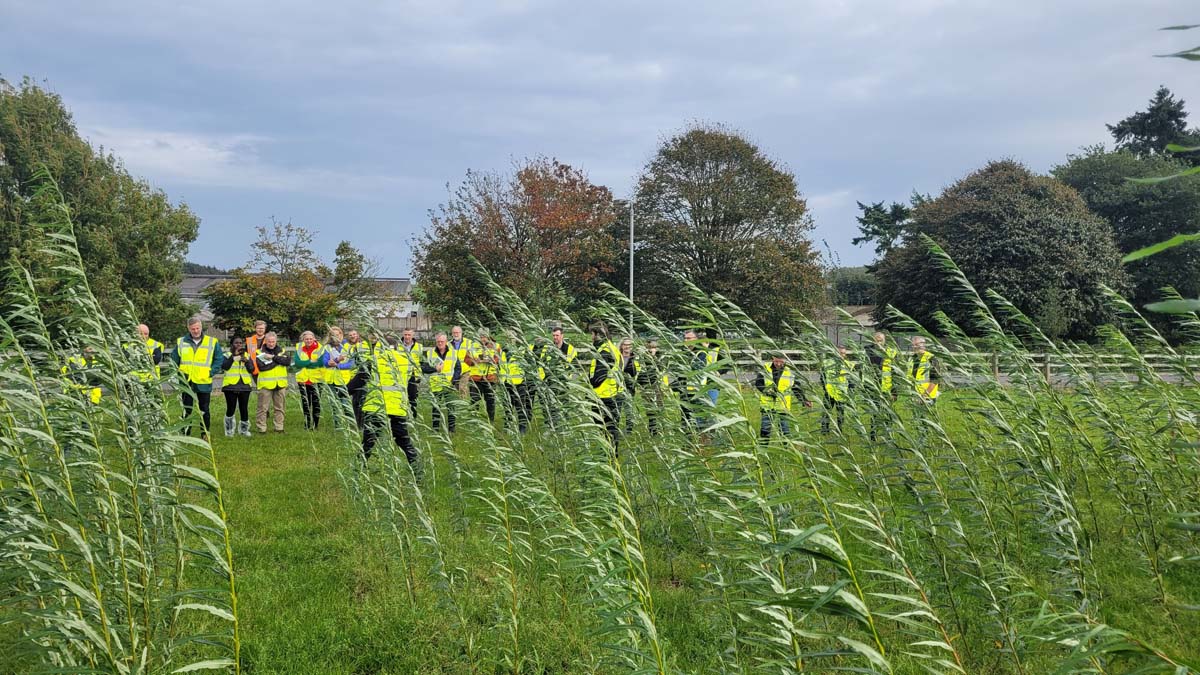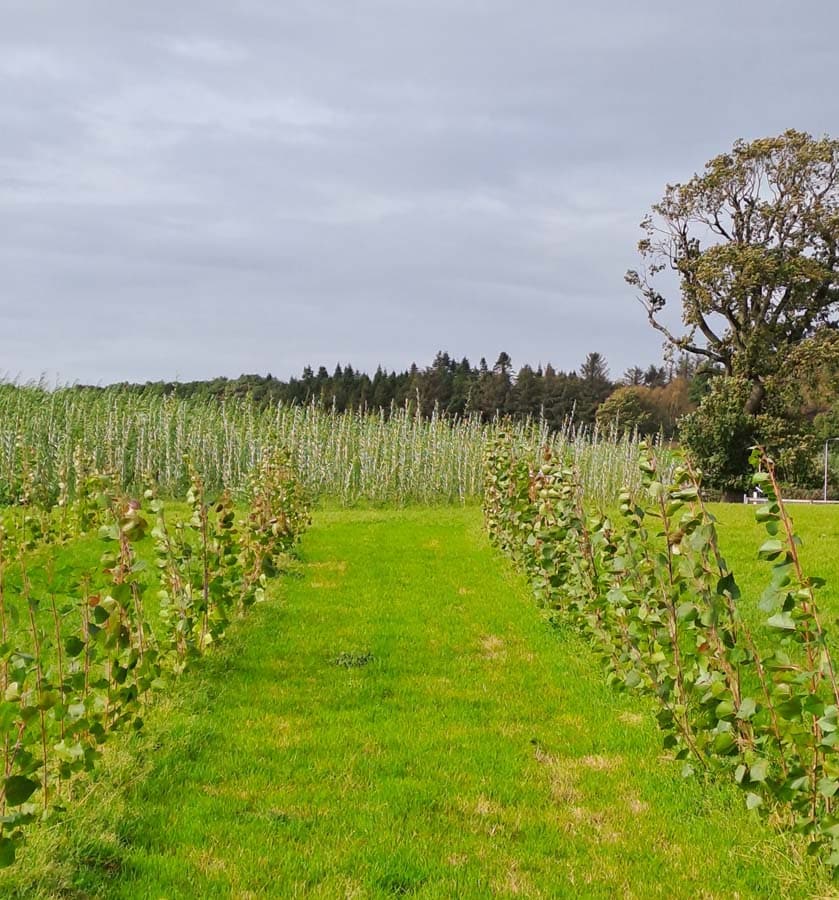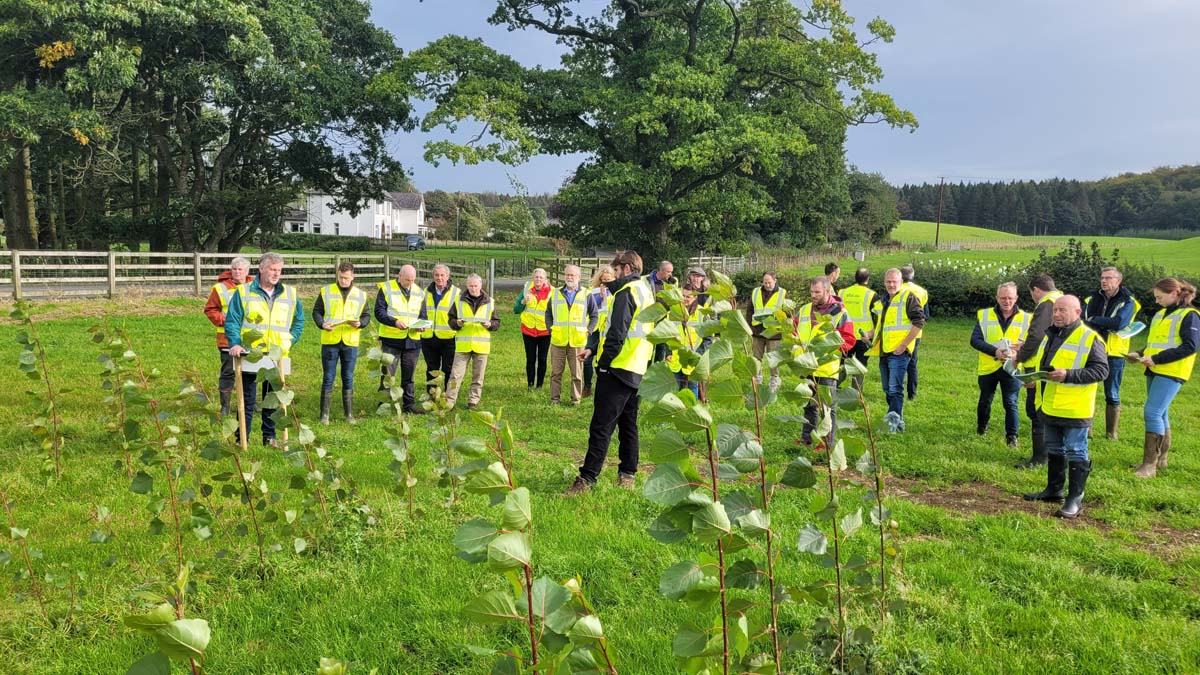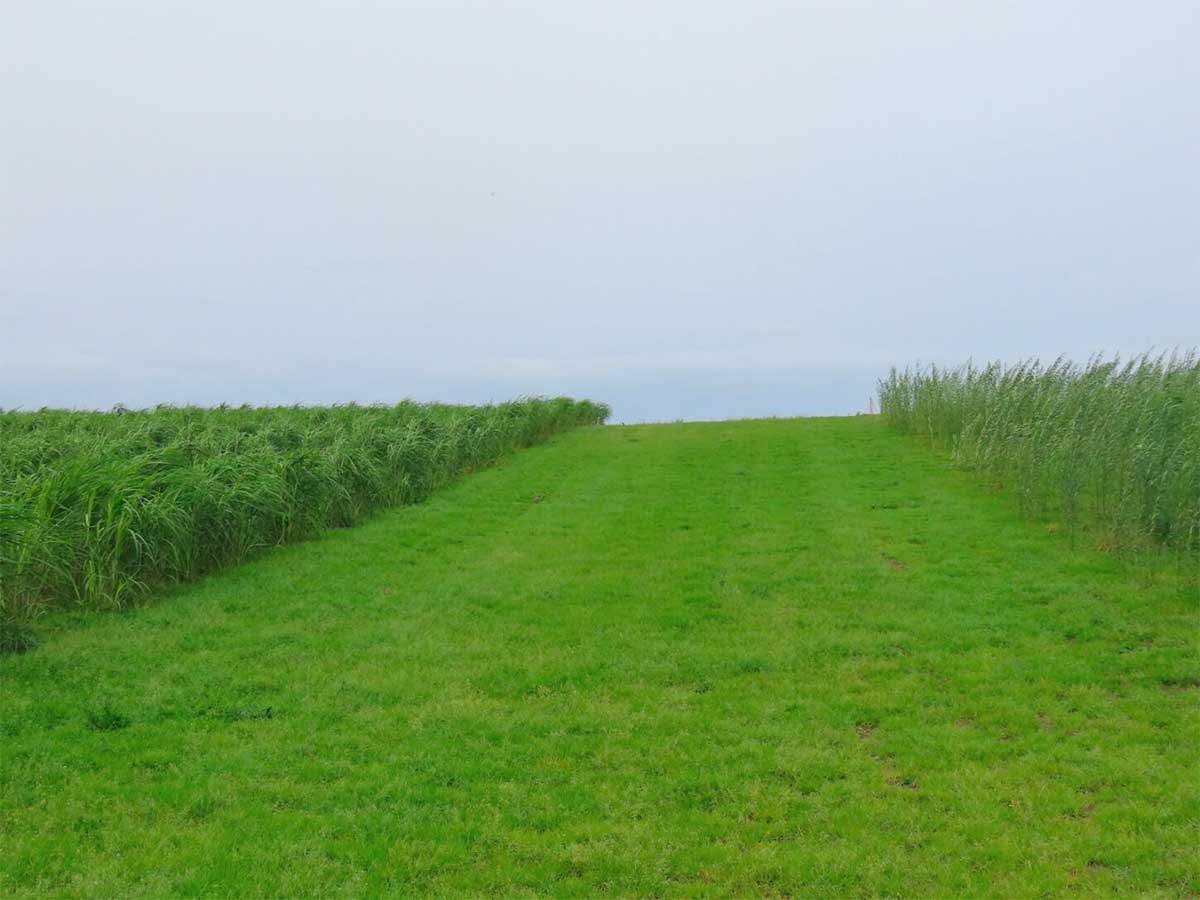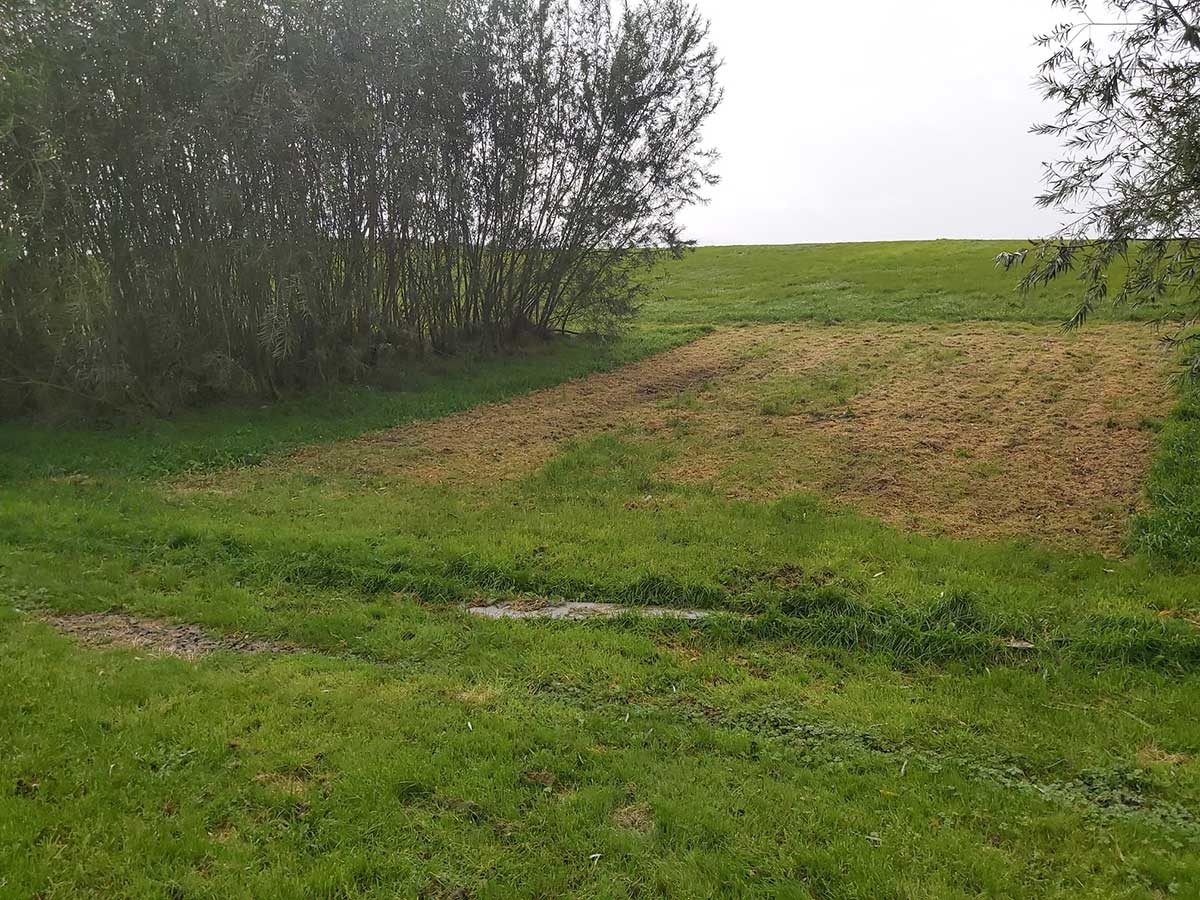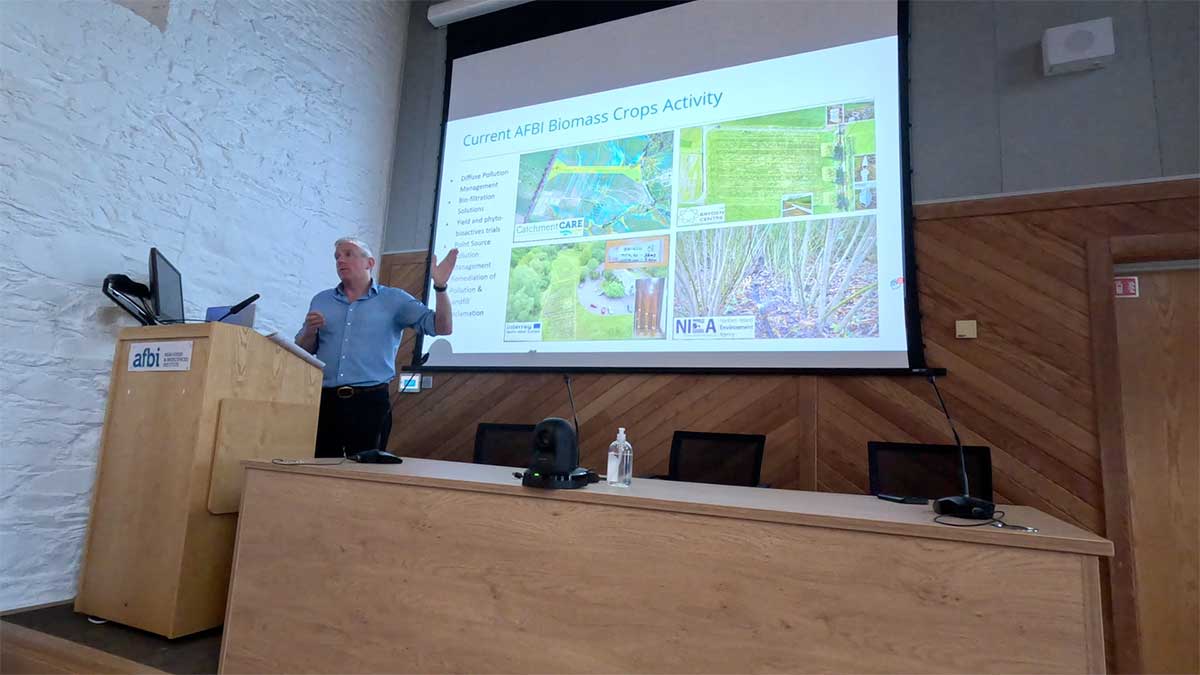Approximately 40 attendees participated in the Biomass Connect Demonstration Day at our Hillsborough Hub Site in Northern Ireland, hosted by the Agri-food and Biosciences Institute (AFBI) These represented a diverse group of commercial growers, advisors, and biomass material processors from both the northern and southern regions of the island.
The event commenced with Mark Needham delivering an introduction, outlining the objectives of the Biomass Connect project. Following this, Chris Johnston, the Project Leader in Environment & Renewable Energy research at AFBI, emphasized the significance of biomass crops, particularly highlighting the role of willow in acting as a buffer zone between agricultural activities and water bodies. His presentation underscored the reduced runoff of water and concentration of nutrients achieved through this approach. This work not only benefits biomass crop cultivation but also plays a crucial role in flood mitigation and reducing nutrient pollution in watercourses. locally, this work could have particular importance in reducing discharges from diffuse pollution from intensive agriculture and point source pollution from treatment systems, offering a model of nature-based solutions with transferable potential.
Callum Williams, the site manager at AFBI, provided a well-illustrated insight into the layout, preparation, and planting of newly established crops and trees. This presentation was invaluable in providing context for the subsequent tour of the plots.
William Macalpine from Rothamstead Research pointed out that the plots planted this year would serve as a valuable resource for growers in the years to come, offering insights into establishment challenges and reducing risks associated with venturing into emerging enterprises.
The presentations sparked a thought-provoking debate among attendees, with some mentioning past failures of biomass miscanthus schemes due to the lack of a market for the crop after heavy incentivisation by the Irish government. Questions arose about the feasibility of developing a viable market for biomass, considering its potential in energy production, environmental benefits, manufacturing, and construction. Mike Cooper of Mischanthus Nurseries suggested proactively planning business operations that could operate without government subsidies. Several group members openly discussed their enterprises, including an equine bedding firm, which was thriving and seeking material suppliers. The event thus served as a platform for networking and potential collaboration.
With favourable weather conditions, Callum and Chris led the tour of the crops. Attendees were impressed by the transformation of the previously bare field, now boasting well-established and meticulously maintained plots featuring a wide range of plants.
The tour provided attendees with practical information on soil preparation, optimal establishment conditions, weed and pest control, and planting techniques. William Macalpine shared insights on species selection in mixtures to mitigate disease spread and explained the significance of male and female Willow trees, which serve as early sources of nectar and pollen for insects.
Among the attendees were commercial foresters who expressed interest in short-rotation forestry (SRF) aspects but raised concerns about lessons learned in their sector, such as the risks associated with planting large areas with a single species and the complexities of planning applications. They emphasised the need to consider land use issues, especially in designating less productive land for biomass crops that may eventually be designated as high nature value (HNV) areas.
Providing attendees with printed maps and clearly signposted crop areas enabled them to identify species and distinguish between planting strategies for short-rotation coppice (SRC) and short-rotation forestry (SRF) as well as annual cropping. These visual aids were deemed essential in helping potential growers visualize the various options available.
As the tour progressed, Chris led the group to observe the buffer strips, well-established plots of willow interspersed with grass, and the drainage layout with accompanying sampling equipment. [Read more about Buffer strips in our Buffer Strips Technical Article]. This project’s location near a watercourse served as a powerful example of how such strips could contribute to ecosystem services like nutrient cycling, water regulation, and sustainable cropping.
In summary, all speakers and attendees reached a consensus: adopting an open-minded approach to biomass crops offers not only opportunities for farm income but also contributes significantly to the transition of land-based industries from sources of carbon emissions and environmental issues to playing a pivotal role in achieving net-zero emissions and enhancing the environment.
Photo Gallery
Video
More Events
Biomass Connect host a series of demo events during the summer and autumn and have a webinar series throughout the winter months. View our what’s on calendar for more details of these and other biomass related events from around the UK and further afield. The next is in association with Terravesta on October 26th: Miscanthus Establishment and Cultivation
